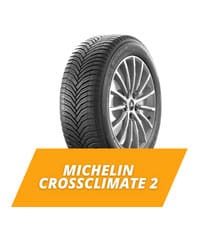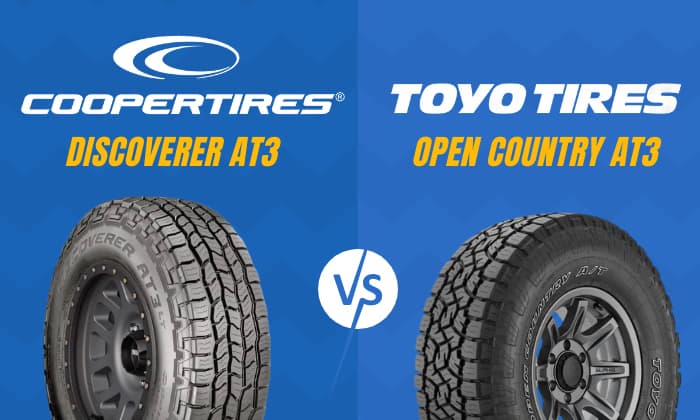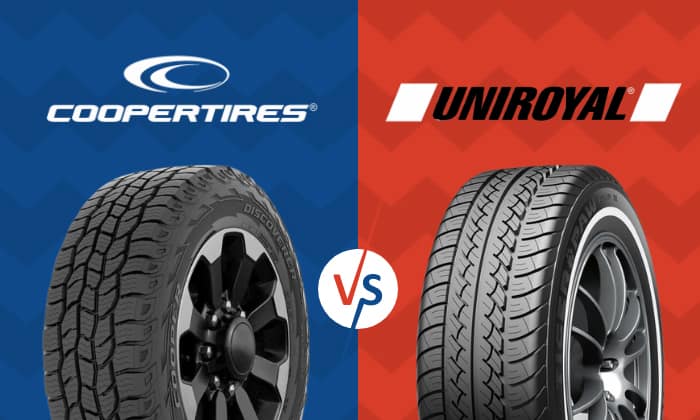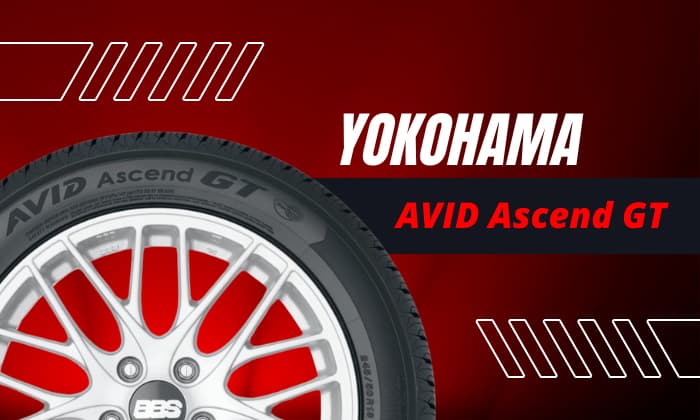Grand all-season touring tires are definitely the go-to tires if you want an outstanding balance of versatility and performance. So, we’ve pitted the top brands in the industry, Michelin and Goodyear, to see who makes the best.
In this Michelin CrossClimate 2 vs Goodyear Assurance Weatherready comparison, we’ll definitely see who reigns supreme when it comes to grand all-season performance. So jump in and find out!
But first, before we get into brass tacks, let’s see how these tires fare against each other on the surface.
| Tire |  |
 |
| Brand | Michelin | Goodyear |
| Tire Type | Grand Touring All-season | Grand Touring All-season |
| 3PMSF | Yes | Yes |
| Tested Size | 225/45R18 | 225/45R18 |
| Tread Depth | 10/32” | 10/32” |
| Section Width | 8.8” | 8.9” |
| Rim Range | 7-8.5” | 7-8.5” |
| Max Inflation Pressure | 50 psi | 50 psi |
| Max Load | 1,521 lbs | 1,521 lbs |
| Tire Weight | 24 lbs | 23 lbs |
| Price | $225.99 | $212.99 |
Table of Contents
What Are They?
1. Michelin CrossClimate 2
The Michelin CrossClimate 2 is Michelin’s latest tire innovation, along with the Defender2, which is also an all-season touring tire. However, the thing that vividly sets it apart from its cousin is its ability to traverse through heavy snow—evident by its coveted 3PMSF rating.
The CrossClimate 2 is a tire that doesn’t mess around, and Michelin ensured this themselves. By arming it with proprietary, cutting-edge technologies, the CrossClimate 2 is definitely a superb tire, no matter the weather.
Whether it’s rain, dry, or snowy roads, expect ultimate performance mainly attributed to its thermal-adaptive compound that essentially adjusts to any temperature. This, combined with P-edge technology, results in a tire that can double as a winter tire.
The V-directional tread pattern reduces hydroplaning and promotes optimal grip on wet surfaces by expelling water effortlessly. Additionally, the tire’s V-shaped chamfers and MaxTouch Construction allow for even ground contact, improving efficiency, traction, maneuverability, and durability.
The Michelin CrossClimate 2 is one of the tire industry’s most eminent tires, garnering high esteem from consumer reports and automotive critics alike.
With excellent user reviews and performance, there are very few tires comparable to Michelin CrossClimate 2, so let’s look at the Goodyear Assurance WeatherReady if it’s on par, if not better.
Related comparisons: Michelin Defender vs Crossclimate 2.
2. Goodyear Assurance Weatherready
Like the Michelin CrossClimate, the Goodyear Assurance Weatherready is a grand all-season touring tire. It comes from Goodyear’s renowned all-season family of tires, the Assurance, which has a pretty solid catalog led by its flagship, the Goodyear Assurance All Season.
For instance, it includes the Goodyear Assurance Maxlife, which has a staggering 85,000-mile tread life warranty. However, the thing that sets the Weatherready apart from its peers is its ability to handle heavy snow due to its 3PMSF rating, similar to the Michelin CrossClimate 2.
That’s because the Goodyear Assurance WeatherReady is equipped with advanced technologies that make it one of the most innovative tires on the market. For starters, it has an asymmetric tread pattern and sweeping traction grooves to reduce hydroplaning.
Its proprietary technology, Evolving Grooves, lives up to its name as the tire literally evolves over time. Its grooves start out deep, but they become wider the more the tire is used, which evacuates water more effectively.
This technology is then complemented by Weather Reactive and Tredlock technology which allow the tire to adapt to any driving conditions. As such, the tire’s tread closes up if you want more control when turning or opens for more hydroplaning resistance.
Lastly, the Goodyear Assurance Weatherready’s tire compound is integrated with soybean oil, which gives the tire the flexibility it needs to traverse through heavy snow, earning it a well-deserved 3PMSF rating.
That said, it’s hard to compare Goodyear tires to Michelin since both are tire royalty, but we’ll try our best in this next section—their differences.
Differences
To assess this Goodyear Assurance Weatherready vs Michelin CrossClimate 2 comparison, we’ve considered automotive threads from Reddit, as well as multiple tests from our in-house team.
1. Wet Performance
Both tires have very specialized technologies to handle water on the road. For instance, the Goodyear Assurance Weatherready relies on its wide array of tread technologies, such as the Tredlock and Weather Reactive, which efficiently expels water very easily.
It also has a softer tire compound which gives it the pliability it needs to grip wet roads more effectively and allow better maneuverability.
Meanwhile, the CrossClimate 2 is relatively more rigid, relying mostly on its directional tire design and 3D grooves to help water pass through the tires quite easily. Because of this, the CrossClimate 2 has fewer sipes, which leads to a slightly lesser grip on wet surfaces.
We’ll give this one to the Goodyear Assurance Weatherready.
2. Dry Performance
Unlike wet performance, the Michelin CrossClimate 2 fares much better on dry roads compared to the Goodyear Assurance Weatherready. Because it has fewer sipes, this allows a more pronounced contact patch, which allows it to grip and maneuver dry roads more effectively.
However, the Goodyear Assurance Weatherready, is by no means a bad tire on dry roads, as it was quite decent. As such, its multiple sipe features clearly made this tire more applicable on wet roads.
3. Snow Performance
When it comes to snow, both tires have a 3PMSF rating, so it all boils down to which tire is better on snow or ice. After multiple tests, both did magnificently well as expected. However, the Michelin CrossClimate 2’s directional 3D sipes gave it the edge on deep snow.
As for ice, the Goodyear Assurance Weatherready’s sheer sipe advantage and softer tire compound allowed it to pass through ice with no hitches at all. So, it’s safe to say that it’s the Michelin CrossClimate 2 for snow and the Goodyear Assurance Weatherready on ice.
4. Treadwear
For your information, the WeatherReady features soybean and open tread pattern with deep and wide grooves. Meanwhile, the CrossClimate 2 has closed tread patterns and shallow grooves even with the same 3D zigzag sipes.
Naturally, since the CrossClimate 2 has a more pronounced contact patch than the Goodyear Assurance Weatherready, it has more rolling resistance. And higher rolling resistance equals higher tread wear due to more heat and more energy consumption.
5. Ride Quality
Tire noise was apparent on both tires. However, the Michelin CrossClimate 2’s tighter sipe design mitigates a substantial amount of airflow through the tire, which allows it to be much quieter than the Goodyear Assurance Weatherready’s relatively wider grooves.
6. Price and Warranty
When it comes to price between Michelin Tires vs Goodyear Tires, both tires cater to the premium market, so expect premium prices on both tires.
However, the Goodyear Assurance is more affordable, with a $212.99 price tag on a 225/45R18 sized tire, compared to the more expensive $225.99 on the Michelin CrossClimate 2.
That said, both tires still reach the $200 mark, so we can’t really say that the Goodyear Assurance is more applicable for drivers on a budget.
As for warranty, both tires sport a 60,000-mileage warranty, which is fairly decent for a grand touring tire.
Pros and Cons
- Better dry and snow performance
- Decent wet performance
- Quieter
- Wet and ice performance can be improved
- More expensive
- Higher tread wear
- Better wet and ice performance
- Decent dry performance
- Less treadwear
- Cheaper
- Dry and snow performance can be improved
- Noisy
FAQs
Which tire is better? The Michelin CrossClimate 2 or Goodyear Assurance Weatherready?
It actually depends. Both tires have specialized features which allow them to function differently. If you want better wet and ice performance, the Goodyear Assurance Weatherready’s multiple sipe technologies give it the upper hand.
However, if you’re looking for dry and snow performance, the Michelin CrossClimate 2’s unidirectional sipe design and higher contact patch hand it the edge it needs.
Conclusion
I hope we’ve shed some light on this Michelin CrossClimate 2 vs Goodyear Assurance Weatherready comparison. So, consider which tire is best for you. Remember, if you’re in an area where ice and rain are an issue, go for the Goodyear Assurance Weatherready.
As for the Michelin CrossClimate 2, it’s definitely the go-to choice in states where it’s dry in summer and more snow in the winter.
























